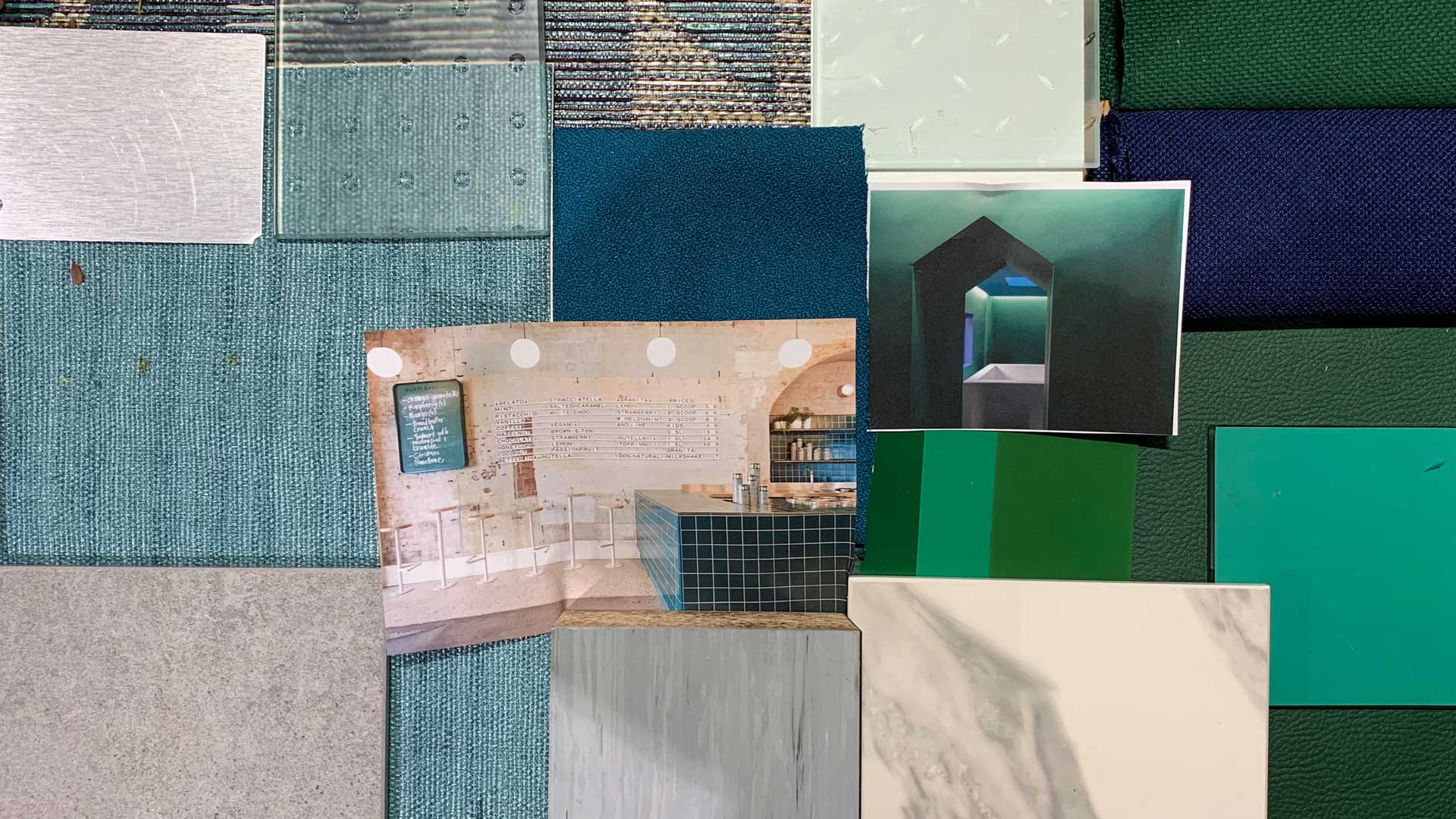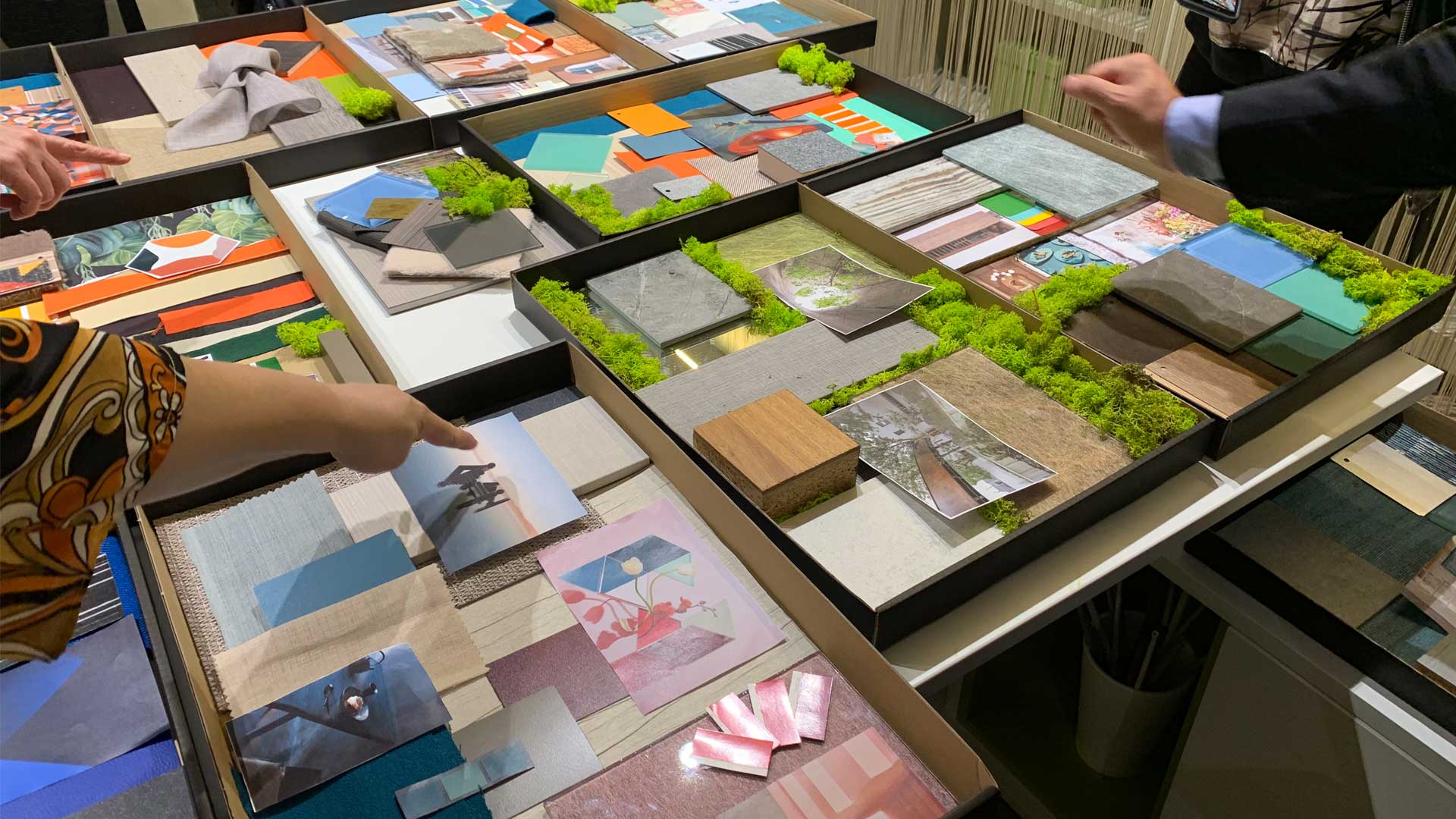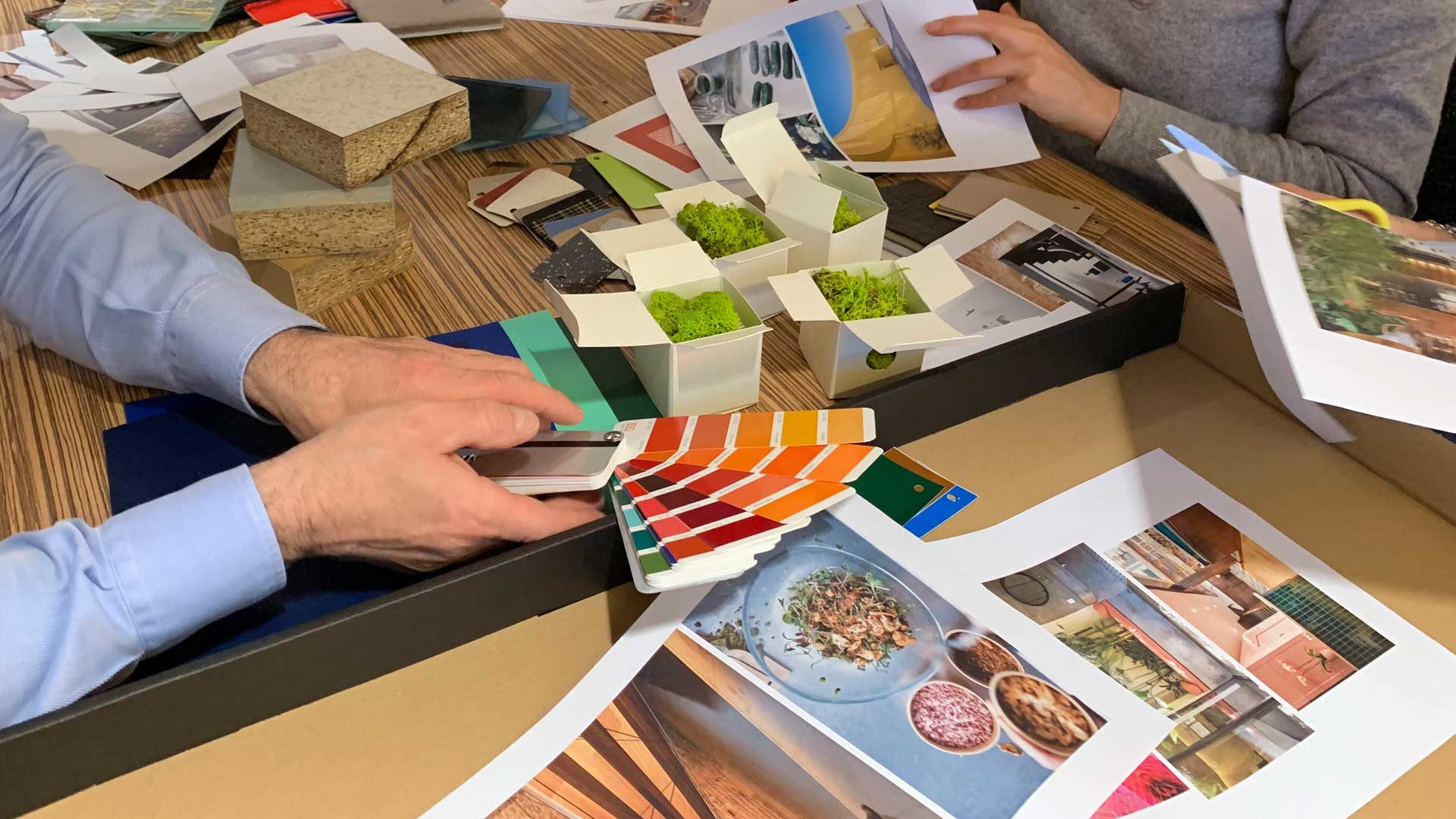A Moodboard is an emotional support material useful for communicating a project’s concept before its realization. Discover what the fundamental principles are to composing a moodboard in order to start creating your own!
Who wants to be a designer for a day?
After the great success of “Design per tutti” (Design for all), organized this last May by Level Office Landscape inside LevelHUB (research and networking center in La Valletta Brianza), we can confirm anyone can become a designer for a day given the motivation!
The seminar consisting of four lessons aimed at design ended with a workshop activity. Attendees were tasked with designing a visual composition allowing for the sharing of ideas and creation of new concepts.
On the 29th of May, from 19:00 – 21:00, designers Penelope Vaglini and Mirko Galati helped participants during a workshop develop inspiring moodboards.
Are you aware what a moodboard is?

Many of you surely know about Pinterest, a platform that collects millions of pictures and shows them side by side with various colors, patterns and sizes. It’s often possible to notice “collages” throughout these groups of images displaying particular colors or themes. These are a kind of moodboard similar to those we’re talking about in this article.
Moodboards are visual and kinesthetic supportive material used to communicate particular sensory feelings through images, colors pallets, textures and graphics. This is an important step for architects and interior designers, collecting materials and visual aids that will help their clients understand how the individual elements of a project work together to create the theme/atmosphere they want to communicate to their customers.
What elements compose a moodboard?
Moodboards are made of various different elements that work together to cream a singular theme or atmosphere. These are the main elements that make a good moodboard:
- Evocative Images
- Color Palettes
- Material Samples
Sometimes designers use other kinds of media to communicate their ideas such as natural elements: leaves, flowers, etc… as these elements are universally known and convey a particular feeling/emotion.

If you want to become a designer for a day and make your own moodboards, here a few simple rules to follow:
-
Search for Images
Pictures, Graphics and Artworks are fundamental to moodboards and are often the starting point for compositions. They can convey specific or broader emotions, and are excellent for presenting interior and exterior examples. Nature is a great starting point for inspiration: there you can find many beautiful scenes.
-
Choose a Color Palette
Once you’ve collected at least three reference images, you can proceed with the creation of a color palette, matching the colors observed in your pictures. Using a color swatch you can select dominant colors (from 3 to 5) and a couple of accents colors. It’s up to you to decide if you want to work with color harmonies or contrasts.
-
Select Material Samples
The third step is to find material samples, textures and textiles similar to the ones present in your reference images, keep in mind your color pallet for this step as well.
-
Build your Moodboard
After collecting all your elements, it’s now time to put them on a rigid support such as forex or poliplat (ideal dimensions being 35×50 cm), fix them to the board to prevent unwanted changes from movement. After finding a layout you like with a pleasant balance, affix your materials, images and color palettes to the moodboard. You can choose order and cleanliness or play with more rough and creative effects.
Now that the rules are clear, it’s time for you to play.
We hope to see you next year, for the second edition of “Design per tutti”!
